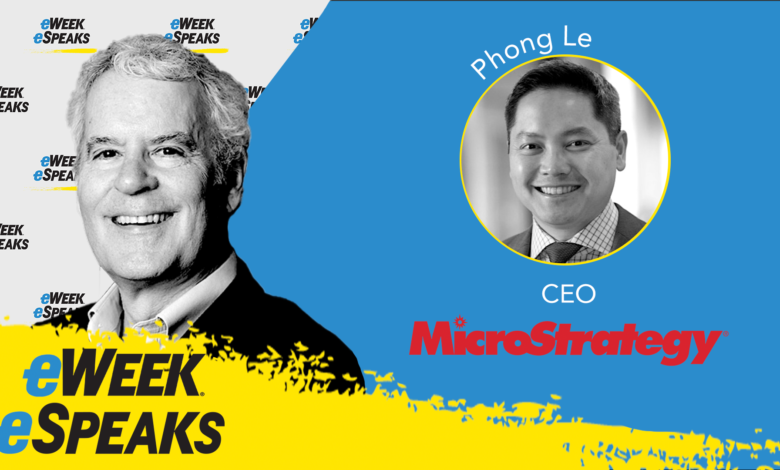MicroStrategy CEO Phong Le on Generative AI and Business Intelligence

I spoke with Phong Le, CEO at MicroStrategy, about how the new combination of generative AI and business intelligence can produce a powerful new solution.
Certainly some industry observers see these two technologies as an unusual marriage. Business intelligence has a long legacy as a steady platform to rely on for critical data analysis. Major financial decisions are made based on the insights derived from BI applications.
By comparison, generative AI is brand new emerging technology. It offers vast potential – creative output based on mere text prompts – yet sometimes slips into hallucinations. Is this new player a good fit for the starchy world of business intelligence?
Indeed, Phong Le said, the combination of generative AI and BI is nascent. In contrast, “MicroStrategy has been doing business intelligence for over 30 years. We invented the sector as you know it, and there haven’t been that many major innovations in the space in the last 10 years.
“Generative AI has, in my opinion, breathed new life into the BI space and redefined what’s important.” Generative AI’s ability to answer in natural language is useful in both consumer and business contexts, he said. “When you get into the core of what businesses need, they need the answers to numerical data.”
“What I want to know when I ask a question to anyone, an analyst or eventually a gen AI bot…I don’t want a predictive answer – I want the answer. And that’s what gen AI plus BI starts to do – and it solves a problem that isn’t solved today.”
Watch the full interview or jump to select interview highlights below.
Interview Highlights: Phong Le on Generative AI and Business Intelligence
These interview highlights have been edited for length and clarity.
The Future of Generative AI and Business Intelligence
Adding generative AI is “the biggest change, the biggest additive change to business intelligence that we’ve seen in decades. And look, gen AI has done that for every sector of software, but BI especially. So I am really excited about what the future portends.”
Over the past decade or so, companies have worked to distribute access to BI insights out to the “edge” workers in the corporation, the retail managers, the sales people on the go.
“That came in the form of dashboards and applications,” Le said. “And what people have found is the further you go away from the corporate core, the less likely people are to be comfortable consuming that information in a traditional dashboard or a grid report.”
In other words, a finance person in corporate is comfortable using a BI program, while a retail store manager typically isn’t.
“The store manager is going to use instinct rather than consume the data in a grid report. So what we tried to do over the last three years is [figure out]: how do we get the edge workers to use BI more and more?
“They’re not really reading their emails. So let’s give it to them in the web where they can self-serve. Well, they don’t really go to the web, so let’s give it to them in a mobile device. Now we’re moving somewhere.
“What gen AI does, for the retail store worker, rather than all of these consumption paradigms that they don’t use now, it just lets them ask a question. Natural language: what’s my inventory at this particular point?
“So the employee at the front line can now use BI and data to make decisions. And I think gen AI solves that last mile problem.”
To see a list of the leading generative AI apps, read our guide: Top 20 Generative AI Tools and Apps



